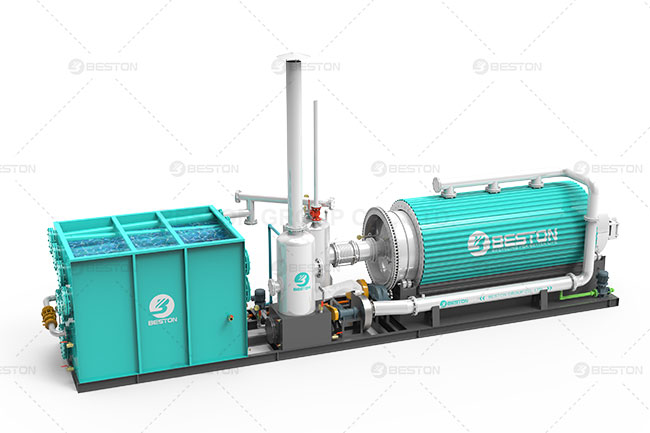In a world grappling with the ecological repercussions of plastic proliferation, the innovation of plastic pyrolysis machines emerges as a beacon of hope, promising a sustainable solution to the plastic menace. These cutting-edge contraptions signify a paradigm shift in waste management, embodying the fusion of technology and environmental conscientiousness.
The Genesis of Plastic Pyrolysis
Let’s embark on a journey through the intricate labyrinth of plastic pyrolysis, a process that metamorphoses discarded plastics into valuable resources. Plastic pyrolysis machine, often hailed as the eco-alchemists of our era, utilize the transformative power of heat in the absence of oxygen to break down complex polymers. This thermochemical conversion leads to the birth of three primary products: liquid hydrocarbons, combustible gases, and a residue of carbon black. Each constituent holds a key role in reshaping our approach to plastic waste.

Demystifying the Mechanism
The heart of a plastic pyrolysis machine is its reactor, a vessel that hosts the alchemical ballet of transformation. Plastics, subjected to controlled heat within this chamber, undergo a process known as “cracking.” In this intricate dance of molecules, high temperatures prompt the breakdown of long polymer chains into smaller hydrocarbons. The result is a cocktail of valuable byproducts, ready to be repurposed.
Catalyst for Change: Applications of Plastic Pyrolysis
Liquid Gold: Liquid Hydrocarbons
The liquid hydrocarbons extracted from the depths of a plastic oil machine are akin to liquid gold. These hydrocarbons, with their versatile chemical composition, find applications across industries. From fueling engines to serving as raw material for the petrochemical sector, the potential is boundless. The alchemical transformation of waste plastics into a resource that powers our world is an exquisite illustration of technological prowess.
Igniting Progress: Combustible Gases
The combustible gases birthed during the pyrolysis process are no mere byproduct; they are energy in its purest form. Plastic pyrolysis machines harness these gases, converting them into heat or electricity. This not only powers the pyrolysis process itself but can also contribute to the energy grid, illuminating homes and driving industrial machineries.
The Enigmatic Residue: Carbon Black
As the plastic molecules undergo their elemental rearrangement, a residue known as carbon black emerges. This enigmatic substance, though often overlooked, possesses inherent value. From reinforcing rubber in tire production to finding utility in pigment production, carbon black ensures that no iota of the original plastic goes to waste.
Navigating Challenges: The Odyssey of Plastic Pyrolysis Machines
Technical Marvels and Hurdles
While the promise of plastic to fuel machine is compelling, the journey is not without challenges. Technical nuances demand precision in temperature control, ensuring the optimal yield of desired products. Engineers and environmentalists alike are navigating this odyssey, fine-tuning the machines to achieve an equilibrium between efficiency and environmental responsibility.
Economic Viability: Balancing the Scales
The economic viability of plastic pyrolysis machines is a topic often scrutinized. As industries weigh the cost of implementing this technology against the potential environmental benefits, a delicate balance must be struck. Innovations in manufacturing and process optimization are critical in tipping the scales in favor of sustainable practices.
A Green Utopia on the Horizon
As plastic pyrolysis machines pave the way for a green utopia, the synergistic efforts of technology, innovation, and environmental stewardship come to fruition. The alchemical transformation of plastic waste into valuable resources signifies not just a technological breakthrough but a moral obligation to our planet.
In conclusion, the saga of plastic pyrolysis machines unfolds as a compelling narrative of transformation—a journey from environmental concern to sustainable optimism. As we navigate the labyrinth of waste management, these machines stand as sentinels, offering a glimpse into a future where plastics are not a problem but rather a source of renewal. More information on Beston Group here.